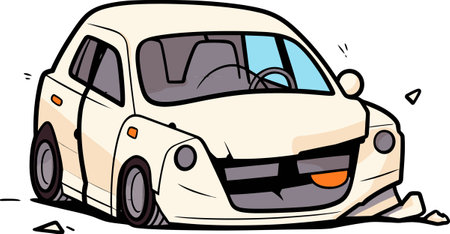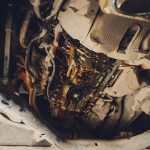1. Introduction: The Role of Seat Belts in Safety
Seat belts are one of the most effective safety features in any vehicle. They are designed to protect drivers and passengers in the event of a crash by preventing serious injuries and saving lives. Despite their proven benefits, some people still neglect to wear them, putting themselves at unnecessary risk.
How Seat Belts Protect You
When a car is involved in an accident, the sudden stop or impact can cause passengers to be thrown forward or even ejected from the vehicle. Seat belts help by:
- Keeping occupants secured in their seats
- Reducing the risk of hitting the dashboard or windshield
- Distributing the force of impact across stronger parts of the body
- Preventing ejection from the vehicle
The Science Behind Seat Belts
Seat belts are designed using basic principles of physics to reduce the impact of a crash. Heres how they work:
| Seat Belt Function | How It Protects You |
|---|---|
| Restraint | Prevents passengers from being thrown forward |
| Force Distribution | Spreads impact force across the chest, shoulders, and pelvis |
| Energy Absorption | Minimizes the shock to the body during a collision |
Why Some People Dont Wear Seat Belts
Despite their effectiveness, some people choose not to wear seat belts due to myths or misconceptions, such as:
- Believing that airbags provide enough protection
- Thinking that seat belts are uncomfortable or restrictive
- Underestimating the likelihood of an accident
- Having a false sense of safety at low speeds
However, studies show that combining seat belts with airbags provides the best protection and that most fatal crashes occur at speeds under 40 mph.
Conclusion
Wearing a seat belt is a simple habit that can make a life-saving difference. It not only protects you but also sets a good example for passengers, especially young children. Understanding the importance of seat belts helps encourage responsible driving behavior and ensures everyones safety on the road.
2. How Seat Belts Save Lives
Seat belts are one of the most effective safety features in any vehicle. They work by securing the driver and passengers in place, reducing the risk of being thrown forward or ejected during an accident. But how exactly do they save lives?
The Mechanics of Seat Belts
Seat belts function using a combination of components designed to absorb impact and keep passengers restrained. Here’s how they work:
| Component | Function |
|---|---|
| Webbing | Strong, flexible fabric that holds passengers in place, preventing excessive movement. |
| Retractor | Automatically tightens the belt during a sudden stop to minimize slack. |
| Pretensioner | Instantly removes stored belt slack upon impact to secure the occupant properly. |
| Latch & Buckle | Keeps the belt fastened securely around the wearer. |
How Seat Belts Reduce Injuries
When a crash happens, vehicles stop abruptly, but passengers inside keep moving at the same speed until stopped by something—either the seat belt or a hard surface like the dashboard or windshield. Seat belts help in the following ways:
- Prevents Ejection: Being thrown from a vehicle significantly increases the risk of fatal injuries. Seat belts keep passengers inside, reducing severe trauma.
- Distributes Impact Force: The belt spreads the crash force across stronger parts of the body, such as the chest, shoulders, and pelvis, reducing injury risk.
- Works with Airbags: Airbags are designed to work in conjunction with seat belts. Without a seat belt, an airbag alone may not prevent severe injury.
- Reduces Whiplash: In rear-end collisions, seat belts help keep the body in place, reducing neck and spinal injuries.
The Science Behind Seat Belt Effectiveness
Data consistently shows that wearing a seat belt dramatically increases the chances of surviving a crash. According to the National Highway Traffic Safety Administration (NHTSA), seat belts reduce the risk of fatal injury by 45% for front-seat car passengers and 60% for light truck occupants.
Survival Rate Comparison
| Situation | Likelihood of Survival |
|---|---|
| Wearing a Seat Belt | Much higher due to impact absorption and restraint. |
| Not Wearing a Seat Belt | Much lower due to higher risk of ejection and severe trauma. |
Final Thoughts on Seat Belt Safety
Understanding how seat belts function highlights their crucial role in preventing injuries and saving lives. They are a simple yet powerful tool that every driver and passenger should use every time they get in a vehicle.

3. Legal Requirements and Consequences of Not Wearing a Seat Belt
Seat belt laws in the United States vary from state to state, but they all serve the same purpose: to keep drivers and passengers safe. Understanding the legal requirements and the consequences of not wearing a seat belt can help you avoid fines and, more importantly, reduce the risk of serious injuries in a crash.
Primary vs. Secondary Seat Belt Laws
Seat belt laws in the U.S. are categorized into two types: primary and secondary enforcement laws. Here’s the key difference:
| Type of Law | Description |
|---|---|
| Primary Enforcement | Law enforcement officers can stop and ticket a driver or passenger solely for not wearing a seat belt. |
| Secondary Enforcement | Officers can only issue a seat belt ticket if the driver was pulled over for another violation. |
The majority of U.S. states have primary enforcement laws, meaning you can be stopped and fined just for not wearing a seat belt.
Penalties for Not Wearing a Seat Belt
Failing to wear a seat belt can lead to fines that vary by state. Below are some examples of seat belt violation penalties in different states:
| State | Fine for First Offense | Additional Consequences |
|---|---|---|
| California | $20 | Increased for repeat offenses |
| Texas | $25-$50 | Possible court costs |
| New York | $50 | Points added to driver’s license if unbelted passenger is under 16 |
While these fines may not seem high, they can add up, especially for repeat offenses. Moreover, some states add penalty points to your driving record or increase insurance rates for seat belt violations.
Exceptions and Special Cases
Some states allow exceptions to seat belt laws. These exceptions can include:
- Medical conditions that prevent seat belt use (requires a doctor’s note)
- Drivers or passengers in certain types of commercial vehicles
- Emergency responders, such as police or firefighters, while performing duties
- Old vehicles that were manufactured without seat belts
If you qualify for an exemption, always carry the necessary documentation to avoid fines.
4. Common Myths and Misconceptions About Seat Belts
There are many misconceptions about seat belts that lead some people to believe they are unnecessary or even dangerous. However, these myths can put lives at risk. Let’s debunk some of the most common misunderstandings.
Myth 1: Airbags Provide Enough Protection Without a Seat Belt
Many people assume that airbags alone will keep them safe in a crash, making seat belts unnecessary. While airbags are an important safety feature, they are designed to work with seat belts, not replace them. Without a seat belt, you can be thrown forward with great force, which can cause serious injuries or even death. Seat belts help keep you in the safest position for airbags to work effectively.
Myth 2: Seat Belts Are Unnecessary for Low-Speed Driving
Some drivers and passengers believe that at low speeds, seat belts are not necessary. However, even crashes at speeds as low as 25 mph can cause severe injuries. The force generated in a low-speed crash can still throw an unrestrained occupant into the dashboard, steering wheel, or windshield. Seat belts protect against sudden stops and unexpected collisions, no matter how slow you are driving.
Myth 3: Being Thrown from a Car Is Safer Than Being Restrained
Another common misconception is that it’s safer to be thrown from a car during a crash rather than being strapped inside. Studies show that being ejected from a vehicle dramatically increases the risk of fatal injuries. Seat belts keep you inside the vehicle, where you have a much better chance of survival.
Myth 4: You Can Brace Yourself in a Crash
Some people believe they can react quickly enough to brace themselves in a crash. In reality, car accidents happen in a fraction of a second, far too fast for anyone to react properly. The impact forces generated in a crash are much stronger than a person’s ability to resist. Seat belts do the work of securing your body in place, preventing dangerous movement.
Seat Belt Myths vs. Facts
| Myth | Fact |
|---|---|
| Airbags alone will protect me. | Airbags work best when used with seat belts. |
| Seat belts aren’t needed for short trips. | Most crashes happen close to home, even at low speeds. |
| Being thrown from a vehicle is safer. | People ejected from a car have a much higher risk of fatal injuries. |
| I can control my body in a crash. | The forces of a crash are too strong for anyone to resist. |
Understanding the truth about seat belt safety helps save lives. Don’t let these myths put you at risk—always buckle up, no matter the situation.
5. Encouraging Seat Belt Use for Everyone
Wearing a seat belt is a simple yet essential habit that can save lives. However, some people still forget or choose not to buckle up. Encouraging our family, friends, and passengers to wear seat belts every time they get in a car can significantly improve road safety. Here are some effective ways to promote seat belt usage for everyone:
Lead by Example
One of the most effective ways to encourage seat belt use is by consistently wearing yours. When others see you buckling up every time, they are more likely to do the same. Set the standard for safety, and others will follow.
Educate About the Importance of Seat Belts
Sometimes, people don’t wear seat belts because they don’t fully understand how crucial they are. Share facts, real-life stories, and statistics about how seat belts save lives. Remind others that even at low speeds or short distances, seat belts can prevent serious injuries.
Use Gentle Reminders
If someone forgets to buckle up, a simple and friendly reminder can go a long way. Instead of demanding or criticizing, kindly say, “Hey, can you please put on your seat belt?” Most people will comply when reminded politely.
Set Rules for Your Vehicle
As a driver, you have the authority to establish safety rules in your car. Make it a policy that everyone must wear a seat belt before the vehicle moves. Let passengers know that for their safety, seat belts are not optional.
Simple Seat Belt Reminder Strategies
| Strategy | How It Helps |
|---|---|
| Keep a seat belt reminder sticker | Visual reminders encourage passengers to buckle up. |
| Make buckling up a habit | Encouraging routine use makes seat belts second nature. |
| Use vehicle seat belt alarms | Let the cars warning system reinforce the habit. |
| Praise good habits | Positive reinforcement encourages repeated behavior. |
Encourage Seat Belt Use for Kids and Teens
Children and teenagers are more likely to wear seat belts consistently if they grow up in an environment where it is a non-negotiable habit. Teach kids from an early age that seat belts are essential, and make sure they always buckle up before driving off.
Spread Awareness on Social Media
Sharing seat belt safety messages on social media can reach a larger audience. Posting reminders, statistics, and stories can inspire friends and family to take seat belt use seriously.
Make It Fun for Young Passengers
For younger children, turning seat belt use into a fun routine can make a difference. Sing a “buckle-up song” or create a reward system for remembering to fasten their seat belts on their own.
Encouraging seat belt use isnt just about following the law—its about saving lives. When we make seat belts a priority for ourselves and others, we contribute to a safer driving experience for everyone on the road.


